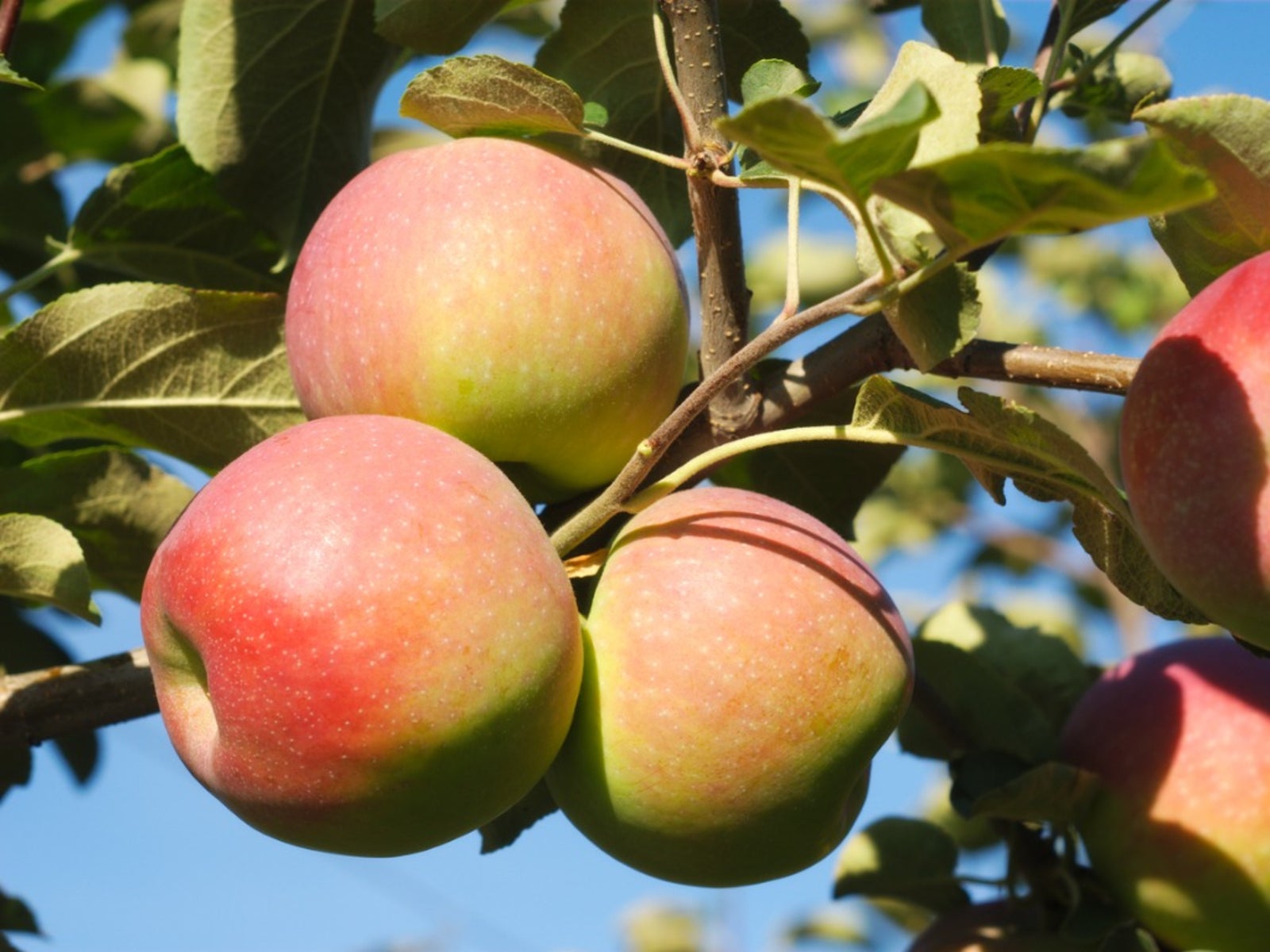Paula Red Apple Growing – Caring For Paula Red Apple Trees

Paula Red apple trees harvest some of the finest tasting apples and are indigenous to Sparta, Michigan. It may well have been a taste sent from heaven since this apple was found by luck amongst a McIntosh variety and its DNA is similar, maybe even a distant relation, so if you like McIntosh apples, you’ll enjoy Paula Red too. Want to learn more about this apple tree variety? Read on for Paula Red apple growing information.
How to Grow Paula Red Apples
Paula Red apple growing is relatively straightforward as long as suitable pollinating partners are nearby. This apple variety is semi-sterile and will need a neighboring crabapple or other apple pollinizer like Pink Lady, Russet or Granny Smith. This medium sized red fruit is harvested quite early, mid-August to September, and is hardy to zones 4a-4b, from at least 86 to -4 F. (30 C. to -20 C.). While relatively easy to grow with similar conditions as other apple trees, they can, however, be difficult to train.
Caring for Paul Red Apple Trees
This variety can be susceptible to cedar rust, a fungal disease caused by spores in damp conditions. Ways to alleviate this is to remove dead leaves and rake debris underneath the tree in the winter. It can also be treated by chemical methods through the use of Immunox. Similarly, the tree can suffer from fire blight, a bacterial infection, which is determined by weather and is seasonal, often in the spring when the tree is coming out of dormancy. It will start as an infection to the leaves. Look for scorching of the leaves, which eventually move through the plants causing dieback to stems and branches. Cut out dead, diseased and damaged areas of the plant upon inspection.
Uses for Paula Red Apples
These apples are appreciated for their fleshy texture and are ideal for sauces but can be eaten fresh from the tree. They are not, however, good in pies due to the moisture they will create. They are enjoyed hot/cold – as a dessert, condiment or in a savory dish, possessing a tart flavor as opposed to sweet, which is why they are probably so versatile and give off a lovely aroma.
Gardening tips, videos, info and more delivered right to your inbox!
Sign up for the Gardening Know How newsletter today and receive a free copy of our e-book "How to Grow Delicious Tomatoes".
-
 Moody Blooms For Spring: 8 Types Of Black Flowers To Add Drama To Spring Displays
Moody Blooms For Spring: 8 Types Of Black Flowers To Add Drama To Spring DisplaysFrom midnight burgundies to inky violets, several types of black flowers can enrich and embolden a spring display. Try these brooding bloomers for a moody garden
By Tonya Barnett
-
 My Homemade Orchid Fertilizer Always Brings More Blooms – Here's The Easy Recipe That Transforms Plants
My Homemade Orchid Fertilizer Always Brings More Blooms – Here's The Easy Recipe That Transforms PlantsScientist-turned-gardener Mary Ellen Ellis shares her tried-and-tested DIY orchid fertilizer recipe, plus more ingredients to try for healthy, happy plants.
By Mary Ellen Ellis